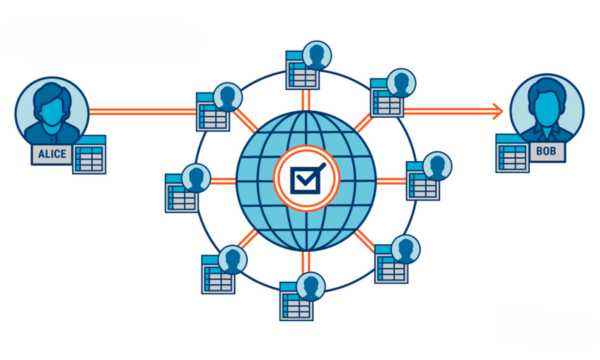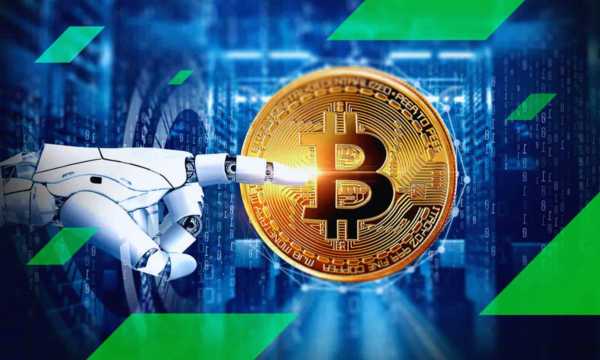Blockchain: How This Technology is Transforming Investments
Discover why blockchain is the future of investments. See more details about this innovation!
Ad
You may have heard of blockchain, but it still feels like something distant, technical, or too complicated.
Don’t worry. The term might sound exclusive to technology experts. But the truth is, blockchain is already shaping the financial market, and that directly impacts investors.
If you want to understand how it works and, more importantly, how to leverage its advantages in investments, this article is for you.
We’ll “translate” everything clearly and directly, without complicated terms, showing how this technology can open real paths for those thinking about the future.
1. What is Blockchain and How It’s Revolutionizing Investments?
Blockchain is a distributed ledger technology (DLT) that works like a digital ledger shared among multiple participants.

Blockchain Data Structure (Google Source)
It stores information in a set of blocks, immutable, and transparent blocks, ensuring security and trust in transactions.
By delete intermediaries like banks and brokers, blockchain allows financial transactions to happen directly, quickly, and at lower costs.
This feature is changing how we invest, bringing more autonomy and control to investors.
Additionally, so-called smart contracts automate financial operations based on predefined rules, reducing bureaucracy and minimizing risks.
This innovation brings efficiency and agility to processes that were once slow and complex.
2. Main Advantages of This Technology for the Financial Market
Before understanding how blockchain is revolutionizing investments, it’s important to highlight the main advantages this technology brings to the financial market.
- Disintermediation: It eliminates the great need for intermediaries, which significantly reduces transaction costs and time.
- Security and Immutability: transactions are encrypted and stored in a way that they cannot be altered, which reduces misleading situations.
- Transparency and Real-Time Auditing: the shared ledger facilitates monitoring and regulatory compliance.
- Operational Efficiency: smart contracts speed up financial processes like settlements and insurance.
- Financial Inclusion: Provides access to financial services for individuals without bank accounts.
3. Practical Examples of Blockchain in the Investment World
Blockchain is already present in various initiatives that are transforming the financial market and offering new opportunities to investors.
- Asset Tokenization: Properties, artworks, stocks, and receivables are converted into tradable digital tokens, allowing the division and easier trading of these assets.
- Stablecoins: Digital currencies like Tether (USDT) and USDC, backed by traditional currencies, facilitate fast and secure international transfers, reducing costs and bureaucracy.
- Tokenized Stock Exchanges: Projects like Token City in Spain plan to offer stock and bond trading via blockchain starting in 2026, bringing more transparency and agility to the market.
- DAOs (Decentralized Autonomous Organizations): Groups of investors collectively govern their assets using tokens and smart contracts, promoting transparent and democratic management.
- Institutional Projects: Central banks and financial institutions are experimenting with blockchain-based platforms to modernize payments and settlements, increasing process efficiency and security.
4. How to Invest in Blockchain: Options and Possible Paths
If you’re interested in taking advantage of the opportunities blockchain offers, it’s important to know the main ways to invest in this innovative technology.
Here are the most accessible and relevant options for those looking to enter this market.
- Cryptocurrencies: buying coins like Bitcoin and Ethereum on regulated exchanges.
- Tokenized funds and crypto ETFs: investing in funds that replicate crypto asset indexes, such as the Ethereum ETF approved in Brazil.
- Tokenized stocks: acquiring tokens that represent shares in companies through specialized platforms.
- Participation in DAOs and DeFi protocols: engaging in decentralized finance for loans, staking, and governance.
- Institutional investment: following and investing in projects and financial products developed by large institutions using blockchain.
5. Main Precautions When Investing Using This Technology
Despite many advantages, it is crucial to be aware of the of contingencies involved to invest safely and consciously.
Knowing these points helps make more informed decisions and minimize potential losses.
- High volatility: the crypto market can experience large fluctuations in short periods.
- Cybersecurity: risks of hacker access on exchanges and digital wallets; transactions are irreversible.
- Regulatory uncertainty: rules vary between countries and may change, affecting investors’ rights and security.
- Governance and vulnerabilities: flaws in smart contracts can cause financial damage, as happened with the DAO project.
- Liquidity and infrastructure: not all tokens have active secondary markets, which can make selling difficult.
6. Blockchain Glossary: Essential Terms for Investors
To better understand the blockchain universe, it is important to know some essential terms that frequently appear in this market.
Check out simple definitions below to facilitate your learning and decision-making.
- Blockchain / DLT: a distributed and immutable database that records transactions in chained blocks.
- Tokenization: the process of converting real assets into tradable digital tokens.
- Smart Contract: a self-executing contract stored on the blockchain that automates operations.
- Stablecoin: a cryptocurrency with a stable value, backed by traditional currencies like the dollar or euro.
- DAO: a decentralized autonomous organization collectively managed by token holders.
- DeFi: decentralized finance operating through protocols without intermediaries.
- Security Token: a token that represents participation in traditional assets or financial rights.
7. Trends and Future in Digital Finance
The future of blockchain in the financial market points to a rapid expansion of tokenization, with estimates indicating growth from US$ 256 billion to about US$ 2 trillion by 2028.
Advanced regulations, such as MiCA in Europe and the creation of the ERIR figure in Spain, are creating a safer and more transparent environment for investors.
Moreover, institutional projects, such as those developed by the BIS and central banks, aim to modernize payments and settlements using tokenized money.
Finally, the advancement of DAOs and decentralized finance (DeFi) should continue driving innovation and democratizing access to investments, opening new possibilities for everyone.
Conclusion
Blockchain is much more than a complex technology: it is a revolution transforming the way we invest, bringing more security, transparency, and opportunities.
Investing in this universe requires attention to details but also offers various paths for those who want to be ahead and take advantage of the benefits of this innovation.
If you want to keep exploring the future of digital finance, it’s worth following trends and diving deeper into content that explains more about cryptocurrencies, tokenization, and DeFi.
Want to learn more about how technology is changing other sectors? Check out our other articles and stay informed!
 AI and Crypto: Intelligent Automation for Trading
AI and Crypto: Intelligent Automation for Trading
Transform the way you trade crypto with the help of artificial intelligence. Ad Automating crypto trading is […]
More How AI Finds Profit Opportunities in the Financial Market
How AI Finds Profit Opportunities in the Financial Market
In the financial market, fast information is worth gold, and AI knows it. Ad The financial market […]
More How AI Can Help you Make Smart Investing
How AI Can Help you Make Smart Investing
Smart investing requires a lot of research, but with the advances in AI, you can succeed! Ad […]
More